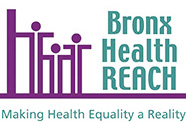Supporters Pack Hearing to Advocate for Health Equity Bill
New York, NY (May 11, 2012) – The Institute for Family Health and New York Lawyers for the Public Interest, along with over a dozen speakers from other organizations, testified yesterday in support of Assembly Bill 07699 at a public hearing called by New York State Assembly Health Committee Chair Richard Gottfried. The sole opposing testimony came from the Greater New York Hospital Association.
The bill, sponsored by Assemblyman Nelson Castro, prohibits hospitals from segregating patients into separate systems of care based on their insurance status. The bill seeks to ensure that all patients receive the same high standard of care in the same settings, as required by Title VI of the Civil Rights Act and the New York State Patient Bill of Rights.
The hearing drew over 60 supporters for the issue, some wearing stickers proclaiming “Make Health Equality a Reality.” Twenty-one people testified at the hearing, including Dr. Neil Calman, president and CEO of the Institute, and Shena Elrington, the director of the Health Justice program at NYLPI. Two Bronx residents testified that they had been harmed by this separate and unequal system of care, and two pastors spoke to the ways in which health disparities had harmed members of their congregations. Representatives from numerous prominent New York City health care advocacy organizations also testified in support of the bill, including the past president of the NY County Medical Society, the Commission on the Public’s Health System, the Community Service Society, and Health People.
Dr. Calman’s testimony focused on the Institute’s efforts to eliminate the two-tiered system of care and the lower quality of care that it perpetuates. He cited the differences between faculty practices and outpatient specialty care clinics, which provide little or no continuity of care, poor communication and coordination between providers, and no after hours or weekend access. “These differences contribute to both poor health outcomes and increased costs, the exact opposite of what the State and Country are trying to accomplish,” he testified.
Dr. Calman continued stating, “I have met personally with multiple hospital presidents, senior clinical leaders and department heads to understand why they maintain two separate and unequal systems of care. Not one of them is proud of this model and every one states that they would change it if they could. Some state that attracting well-insured patients from outside the city would be hindered if they needed to share facilities with the poor patients who reside in the hospitals’ neighboring community. Still others stand behind the mistaken claim that it is illegal for a hospital to integrate the care of privately insured patients and Medicaid folks in the same clinical setting and bill the appropriate payer.”
Shena Elrington from NYLPI spoke on the illegality of the hospitals’ steering practices, testifying that by separating patients based on insurance status and source of payment, hospitals were in violation of federal, state, and local civil rights laws. Further, testified Ms. Elrington, these hospitals are in violation of the New York State Patient Bill of Rights and are openly flouting guidelines issued by the NYS Department of Health in the New York State Medicaid Managed Care and Family Health Plus Model Contract. “We await further action. We recognize, however, that in the meantime people are suffering – losing limbs, getting sicker and dying. They are not receiving the care to which they are entitled,” concluded Ms. Elrington. “The Health Equity Bill represents an alternative and powerful means for addressing the two-tiered system of care.”
The opposing testimony from GNYHA asserted that the bill calls for all patients to be diverted to the clinic system, a statement that entirely mischaracterizes the bills intent. The bill does nothing to prevent faculty practices and private physicians’ offices from operating; it simply prevents hospitals from discriminating against Medicaid beneficiaries and the uninsured. GNYHA’s claim that integrating care is impractical or impossible is also misinformed. Some departments within premier academic medical centers in New York City and across the country already integrate care, providing the same standard of care to all patients in the same setting regardless of the patients’ insurance status.
Dr. Bert Petersen, the director of the breast surgery clinic at St. Barnabas Hospital in the Bronx, provided testimony on his practice, where he sees all patients at the same time and in the same place. Contrary to what GNYHA asserts, Dr. Petersen testified that he has successfully integrated each practice he has worked in and has had no problem billing the appropriate payer, nor experienced any decline in revenue by seeing Medicaid and privately insured patients at the same time and in the same place.


